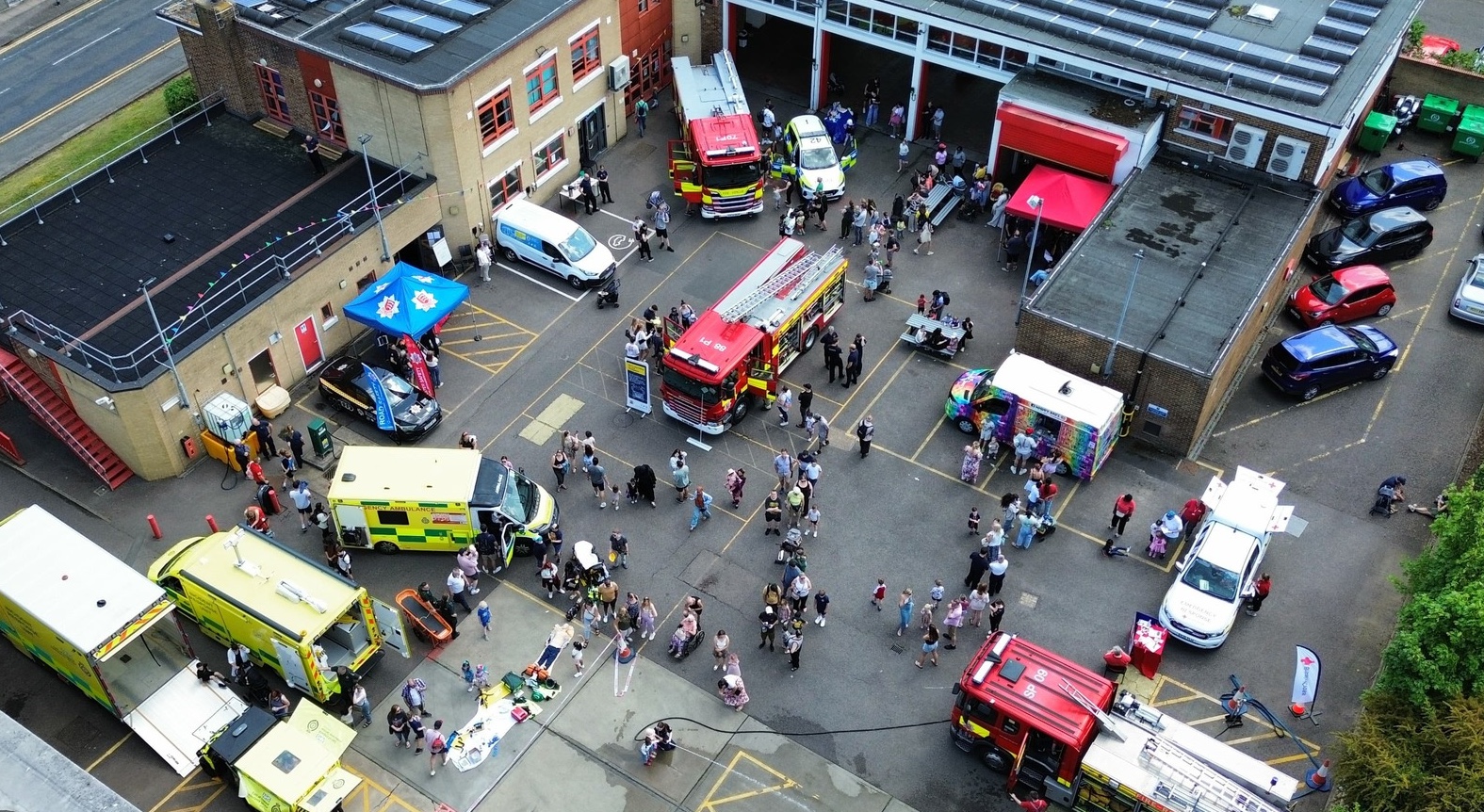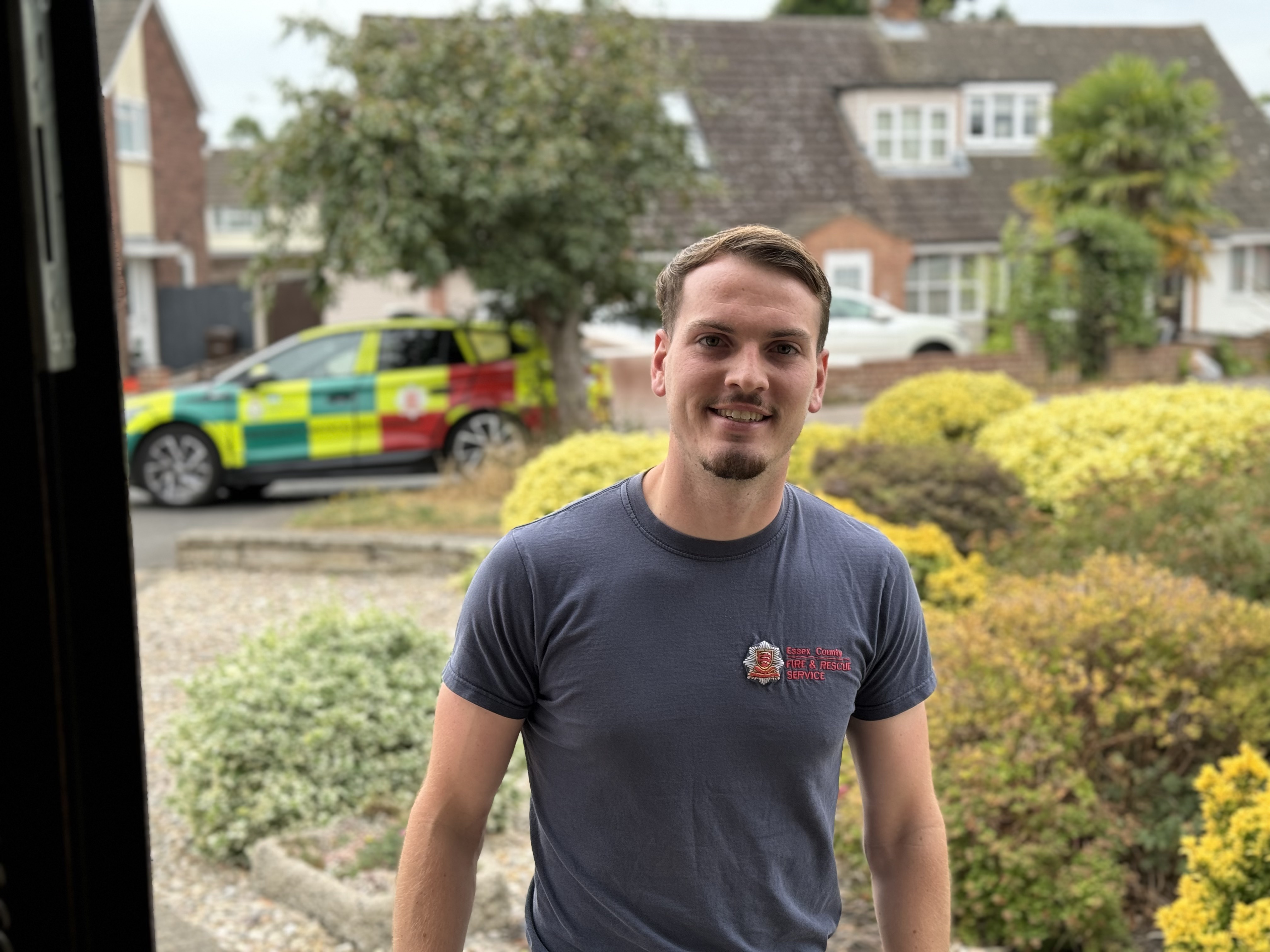Firefighter Role Profile
Firefighter
Department: Prevention, Protection & Response – Delivery
Role Code:
Role: Firefighter
Responsible to: Crew Manager
Responsible for: No line management responsibility
Position in Service Structure
| Brigade Manager |
| Area Manager |
| Group Manager |
| Station Manager |
| Watch Manager |
| Crew Manager |
| Firefighter |
Job Purpose
To protect and save life, property and the environment by to deliver a first class operational, prevention and protection service to the public of Essex and contribute to the implementation of the watch business plan.
Key Responsibilities and Tasks/Functions
FF1
Inform and educate your community to improve awareness of fire and rescue safety matters
This unit is about meeting ECFRS’s targets for specific community needs to ensure that the communities that you serve are safer
1.1 Promoting safety to your community This is about working with your community, either at your normal workplace or out in your community. Examples of activities could include:
- Responding to requests for safety information
- Taking part in community events
- Responding to requests for leaflet drops
You may work without direct supervision or as a member of a fire and rescue service or partnership team at events organised by or through your own organisation within your own community. The types of information you will provide may cover safety in relation to fire or wider safety issues.
1.2 Giving demonstrations and instructions to help people get a better understanding of safety matters Assist with community learning and promoting understanding of safety matters. Examples of activities could include:
- Demonstration of targeted safety responded to your community and everyday hazards/risks
- Raising awareness of the role of the Fire and Rescue Service
- It includes your involvement in both formal and informal activities within your local community.
FF2 Take responsibility for effective performance in fire and rescue
This unit is about taking responsibility for your own performance (including personal health and fitness), working well with other people and developing your own skills in the job role. It covers:
2.1 Taking responsibility for your own personal performance – This is about your day-to-day working, either at your normal workplace or out in your community. It includes your responsibility to make sure your actions do not adversely affect
- Your own health and fitness
- Your ability to work safety within agreed level of authority
- Safe systems of work and working practices
2.2 Working with Others – this is about your ability to maintain your knowledge, skills and understanding through personal development to meet:
- Agreed changes in practice
- Maintaining existing competence
It includes your involvement in identifying and planning how to address your development needs to maintain your required level of competence.
FF3 Save and preserve endangered life
This unit is about you working as a team member to search for life and rescue people during fires and other incident. This may cover working as an individual but will usually involve being part of a team to provide treatment to casualties. It covers:
3.1 Conducting a search for life – Search safely for life using the range of personal protective and rescue equipment available to you.
3.2 Rescuing life involved in incidents – Rescue life (human or animal) safely using the range of personal protective and rescue equipment available to you.
3.3 Providing treatment to casualties including Basic life support and casualty handling – treat casualties, using the range of treatment and equipment available to you, within its capabilities and within your agreed level of authority, responsibility and expertise.
3.4 Supporting people involved in an operational incident - provide both physical and emotional support to people directly and indirectly involved in an operational incident.
FF 4 Resolve fire and rescue operational incidents
This unit is about resolving a range of operational incidents in a fire and rescue context.
4.1 Controlling and extinguishing fires – Work as a team member to respond to emergencies involved all types of fire, tackled by single and multiple crews. You will use the range of personal protective equipment available and safely operate appropriate equipment to access, control and/or extinguish fires and minimise damage to property and the environment from the effects of fire and its extinguishment.
4.2 Resolving incidents other than those involving fire or hazardous materials – Work as a team member to respond to emergency rescue, non-emergency or special services, e.g. persons trapped in vehicles, machinery etc., lock-ins, lock-outs, pump-outs, emergency provision of water, support to other agencies.
4.3 Supporting people involved in an operational incident – provide both physical and emotional support to people directly and indirectly involved in an operational incident. This includes reassuring and comforting people, protecting their privacy and dignity, maintaining security at the scene of an incident and liaising with other agencies.
FF5 Protect the environment from the effects of hazardous materials
Work as a team member to respond to emergencies involving hazardous material (i.e. any materials that potentially present a hazard to health or the environment) involving single of multiple crews.
5.1 Limiting damage to the environment from hazardous materials – Work as a team member to respond to hazardous material incidents.
5.2 Decontaminating people and property – work as a team member to decontaminate people and property involved in hazardous incidents.
5.3 Supporting people involved in an operational incident – provide both physical and emotional support to people directly and indirectly involved in a hazardous materials incident.
FF6 Support the effectiveness of operational response
Ensure that the information and resources you use for operational response are available as required.
6.1 Collecting information on risks in your community – work as an individual or team member to collect new, or update existing, information on risks in your community. Examples could include sites that contain hazards that need special responses e.g. chemical, biological and radioactive, sites that by their nature need special responses e.g. hospitals, shipyards, zoos, airports, risk that might lead to an incident e.g. property that is derelict or unoccupied.
6.2 Collecting information on resources in your community – Work as an individual or team member to collect new, or update existing information on resources in your community. Examples could include fixed installations, bulk storage of fire-fighting media, bulk storage of decontamination media, storage of fire-fighting equipment, water supplies and fire service access.
6.3 Maintaining internal resources – Work as an individual or team member to test, maintain and commission equipment on or in stations, for example spare fire-fighting and rescue equipment and internal resources and fire and rescue vehicles, e.g. fire-fighting and rescue equipment and media.
FF7 Support the development of colleagues in fire and rescue
Help your colleagues to develop themselves in their job role
7.1 Support the development of colleagues in learning resources related to workplace equipment and supporting information – Communicate your skills and knowledge with colleagues and support the development of colleagues by encouraging colleagues to ask for help and support on work related issues, provide feedback to colleagues on their performance at appropriate times and give them support then needed, promote the Service’s values, ethics and codes of practice to colleagues and encourage self development and independent decision making.
FF8 Contribute to fire safety solutions to minimise risks to your community
Undertake inspection of premises within your area of responsibility
8.1 Inspecting premises to minimise risks to people, property and the environment – Work within your competence and authority as an individual or in a team inspecting premises to set criteria.
8.2 Report on issues arising at inspection – Work within your competence and authority as an individual or in a team to report on an inspection with regard to a satisfactory outcome or problems relating to an inspection. Examples could include changes to the premises in terms of ownership, use and storage, failure to comply with requirements, changes that conflict with the requirements for use, and conditions/situations that are the responsibility of another authority e.g. occupier being at risk due to age or infirmity, storage of goods/resources that are subject to control by another body, threats by occupiers/owners to self or others.
FF9 Drive, manoeuvre and redeploy fire and rescue vehicles
Drive a fire and rescue vehicle safely to and from an incident e.g. a fire – following the most effective route. Siting the vehicle safely and securely at incidents and then taking the vehicle to its next required position.
9.1 Driving vehicles to incidents - This covers any incident requiring an emergency response or any incident requiring the relocation of resources, following regulations and guidelines e.g. Road Traffic law, Civil Law (duty of Care), Health & Safety Law, Highway Code, Legal Exemptions and Roadcraft.


